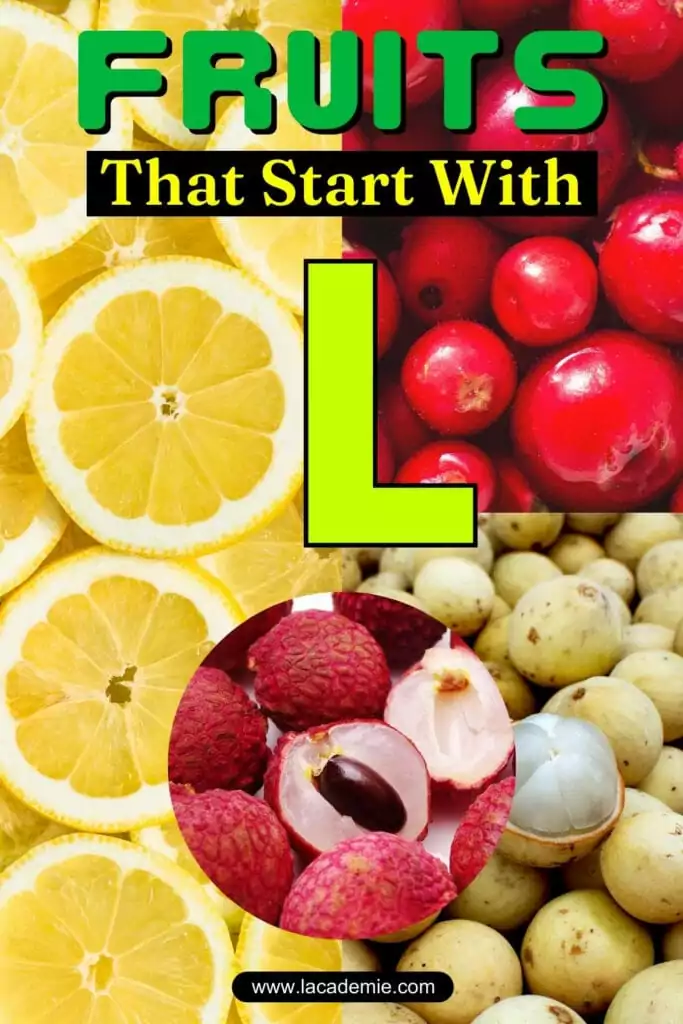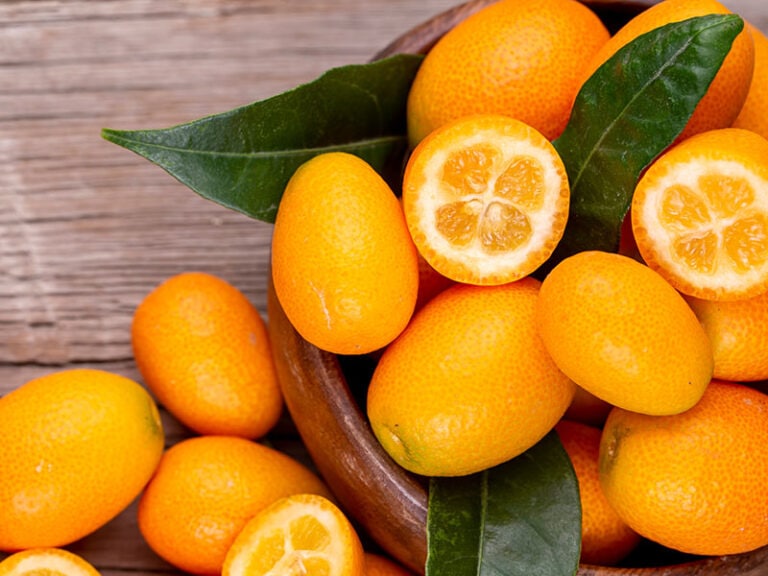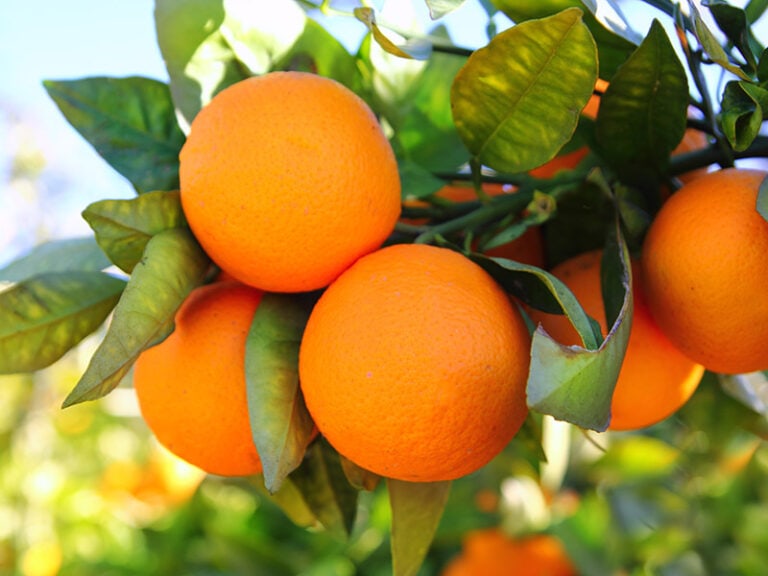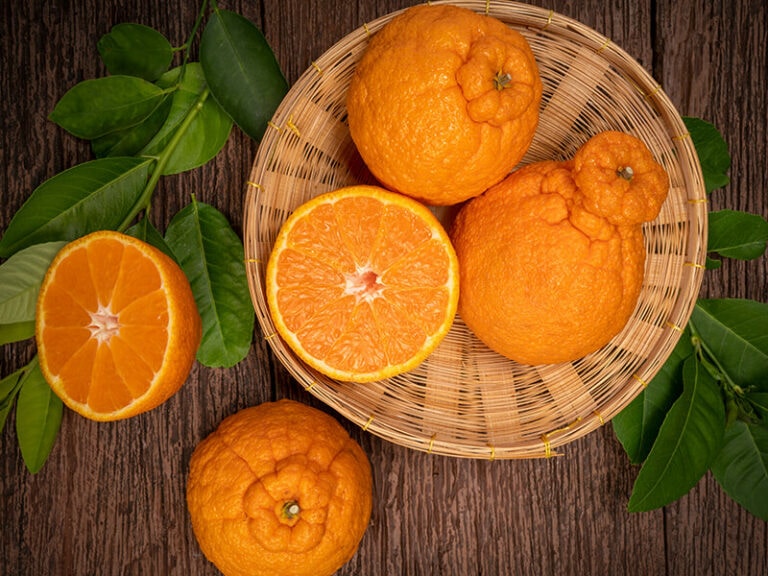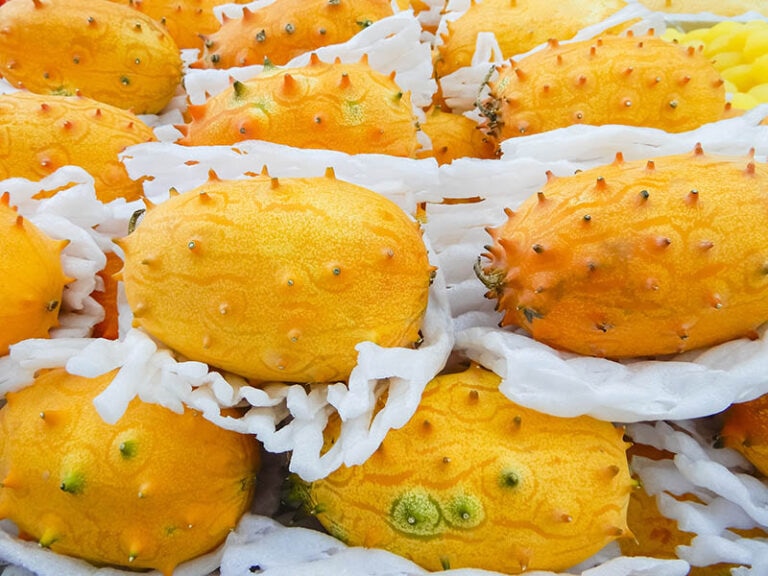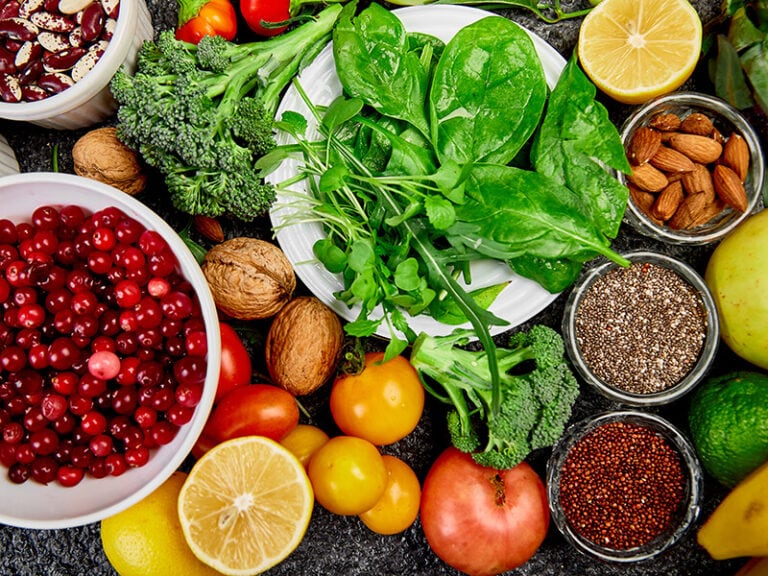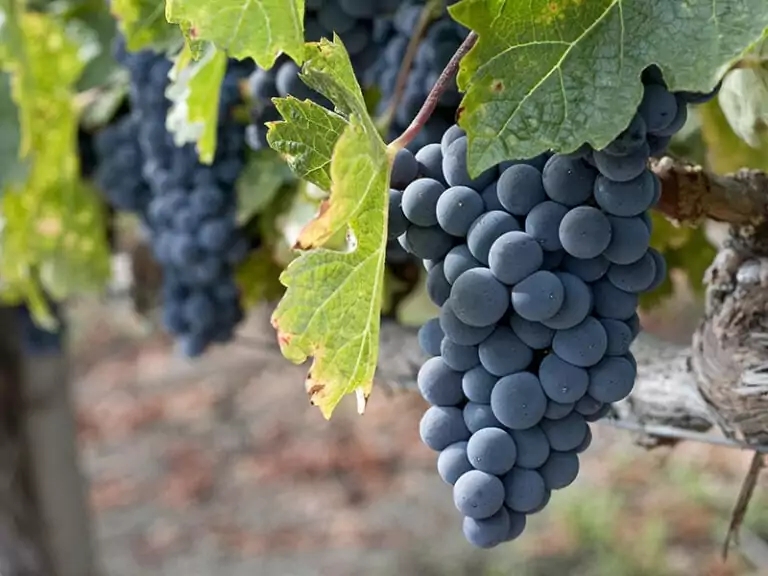When I think about fruits that start with the letter L, only “lime” pops into my mind since it’s one of the most common fruits. If this is the case for you, then the upcoming L-something fruits will blow your mind.
You heard me right; there will be so many kinds of fruits starting with the letter L waiting for you. These fruits will amaze you with their appearance and flavor.
I created this article to introduce you to these new exotic fruits and broaden your knowledge of L-something fruits. Come along and follow me to the end of the article, so I can walk you through every one of them.
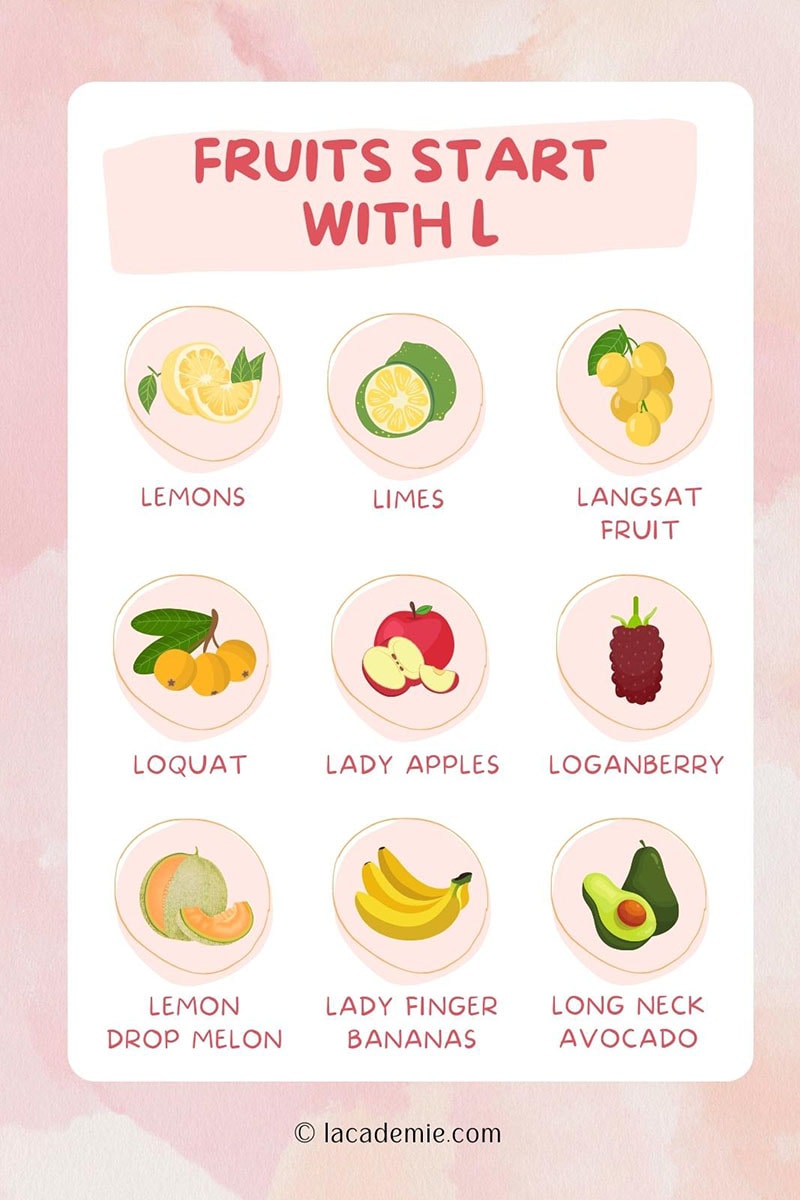
Top 9 Most Common Citrus Fruits With L As A Starter
The citrus fruit group is one of the fruit groups that contain a high level of vitamin C and other vitamins. You can find them in most regions, widely distributed in local markets, supermarkets, and grocery stores. Let’s find out the common citrus fruits starting with the letter L.
1. Lemons
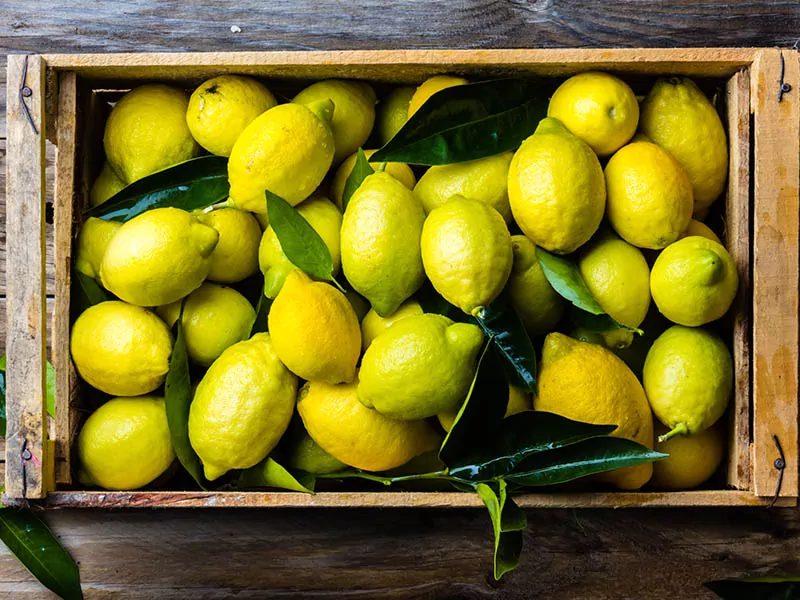
Lemon is one of the most common citrus fruit varieties that grow across the world. Even though its origin remains unknown, you will find different types of lemon in each part of the world.
As a citrus family member, lemons are widely used to add sour flavor to foods and drinks, one of which is lemonade. However, make sure you know how to differentiate between regular and pink lemonade before buying either.
This sourness acts as an indicator of the large vitamin C amount they contain. Specifically, only 58 grams of lemon can provide over 30 milligrams of vitamin C.
Lemons and their tremendous health benefits exceed from weight loss, preventing dehydration to relieving depression and preventing cancer. Being health beneficial, relatively available, and inexpensive are the factors that have made lemons so widely favorable.
2. Lemon Aspen/Lemonwood
Despite its name, lemon aspen isn’t one of these familiar lemon types you know. It is a small tree that grows in rainforests at an altitude of up to 1,000 meters. You might have never seen this fruit before; it mostly grows near the coastal area of Queensland, Australia.
Lemon aspen carries a soft spherical shape, light green skin like lime, and their seeds are black and small.
This fruit can be used to make sauces, jams, jellies, preserves, and beverages. Australian people love its sour apple-like flavor, some even say lemon aspen carries a hint of grapefruit crossed with lemon tart.
Lemon aspen grows in heavy bunches, and farmers would harvest the fruits in midsummer and autumn. You can collect the semi-ripe fruits when they fall on the ground or give the tree a firm shake.
3. Limes
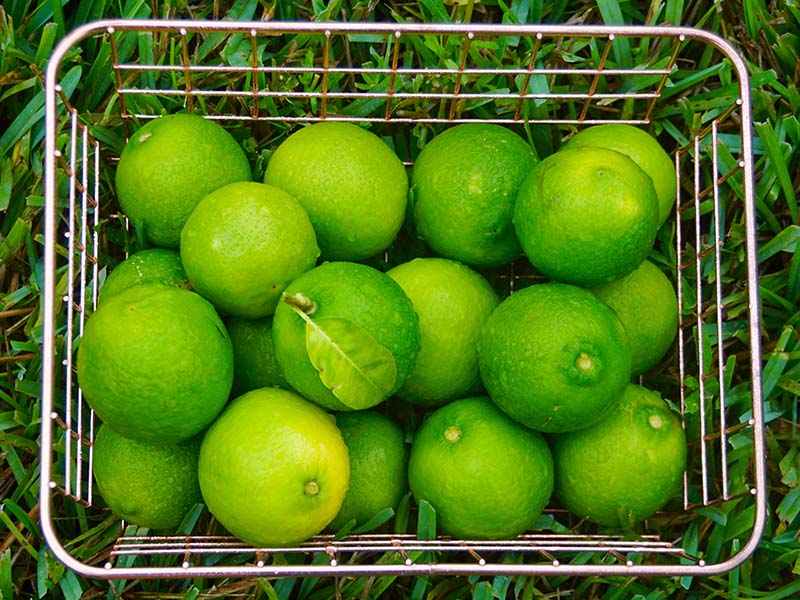
With its familiar green color, lime has branched into several species worldwide, such as key lime, Persian lime, Makrut lime, and desert lime. It is also one of the most popular fruits in the citrus family and is originally seen in Southeast Asia, South Asia, and Australia.
Lime is a great source of natural vitamin C and sugar, and you can grow lime trees easily in home gardens. When mixing tropical cocktails, lime juice is a bright candidate. Lime juice is a common cooking ingredient in Thai, Vietnamese, Mexican, and Indian cuisines.
Another remarkable usage of lime is its essential oils. Burning lime essential oil immediately gives your home a divine uplifting scent. It’s also great for keeping mosquitoes and insects away.
Here is what a lime farm looks like!
4. Lima Orange
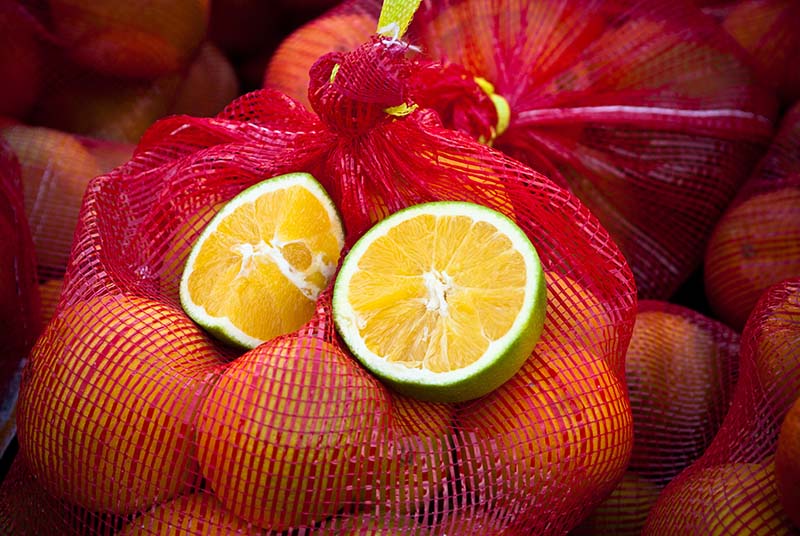
Belong to the all-time-favorite orange group, Lima orange is a seasonal fruit that is only available in late winter to early spring. This fruit is always in high demand for its aromatic scent and sweet flavor.
Lima orange skin is in a lighter tone of orange, with beige color seeds inside. It is also very much like an orange you see on the market.
Due to the specific dry heat climate, you will find a large amount of evergreen Lima orange trees in the Mediterranean. Local people love Lima orange for its juiciness, softly sweet flavor, and high concentration of vitamin C, vitamin A, and fiber.
Lima orange tastes best when you eat it on its own as fresh fruit or make juices, smoothies, shakes, cakes, fruit tarts, or cheesecakes.
5. Lemato Fruit
When looking at this fruit for the first time, I thought, “Wow, this tomato has lemon skin”. Lemato or Rosato is a hybrid cross between lemon and tomato. This is the work of an Israeli researcher who engineered tomatoes’ taste with a hint of lemon and rose aromas.
Since it was created in a lab, up until now, only nearly 82 people have tested and experienced the fruit. What a unique experience they had! Lemato has a sense of perfume plus lemongrass. Some even said it tasted like roses or some fragrance.
As far as science goes, you and I still have to wait for a completely modified version of lemato to try for ourselves. I’m excited to see how the farmers distribute this interesting fruit worldwide. How about you?
6. Loquat
Loquat, also known as Japanese Medlar, is a fruit originally from China. People grow loquat trees for their leaves and their fruits. People love making herbal tea out of loquat leaves, and the fruits are quite enjoyable and beneficial.
Loquat is a spring and summer fruit. When it is ripe, you can smell its sweet aromatic aroma from miles away. Loquat fruit is round, almost like a pearl shape. It grows in clusters, and the skin carries a yellowish or burned-orange color.
The fruit’s flesh is high in nutrients such as vitamin A, B6, B9, magnesium, and potassium. These nutrients are specifically effective in preventing cellular damage and are beneficial for improving vision, boosting your immune system, and promoting cellular rejuvenating.
A detailed instruction on how to grow a loquat tree for you!
7. Limequat
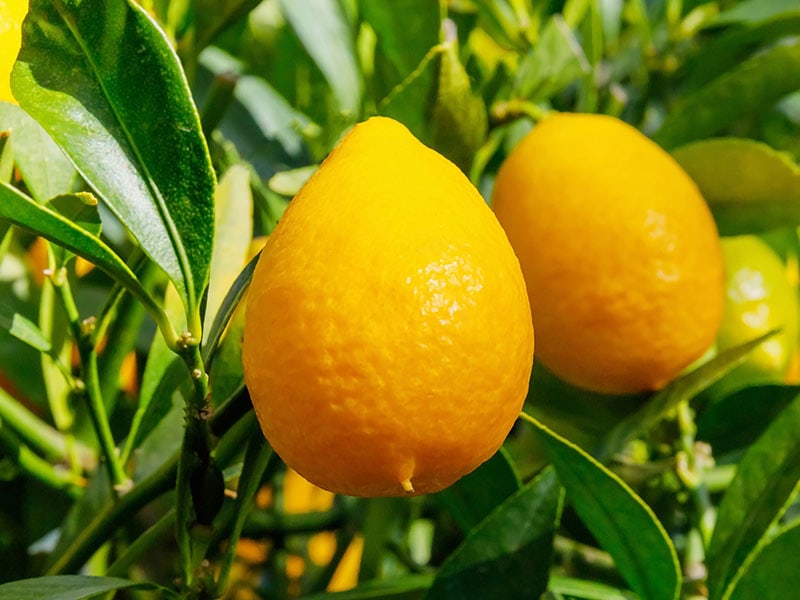
If you love trees that can bear sour fruits all year round, then limequat is a good fit. On top of that, limequat produces fruits at a very early stage. Limequat is a hybrid between key lime and kumquat. Therefore, it carries many of the citrus characteristics.
This bushy plant is extremely easy to grow indoors or outdoors, with temperatures between 50°F to 90°F. It is now grown worldwide from Asia to South Africa, to Europe and the United States. All it needs is decent sunlight and water, and it will grow in no time.
Limequat fruit is a small fruit that you can eat as a whole with its skin on. It’s so sour that you can barely finish a whole fruit.
It is best to eat when it’s ripe or when the skin is turning yellow. You can also treat limequat in cooking as you would do with lemons or limes, especially limequat jelly on toast!
8. Limau Bali
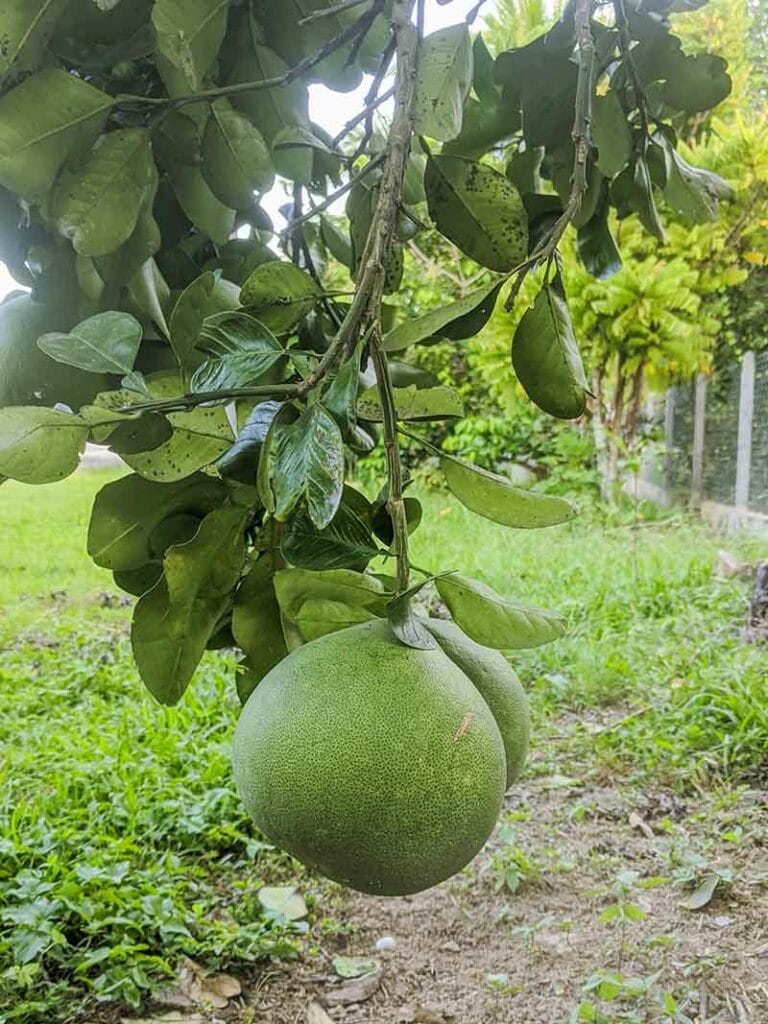
Limau Bali is a medium-sized fruit that is similar to grapefruit. It is understandable because Limau Bali is a different name for pomelo fruit, which has thick green skin covered in pores and a divine fragrance.
This fruit is abundant in the summertime and sometimes in the winter. You can eat Limau Bali fresh just by peeling the skin until you see a smoother layer of skin wraps around its citrus. Lima Bali fruit contains a good amount of vitamin C, calcium, vitamin A and B.
Besides eating the flesh, you can also dry its skin to make jams or boil it with locusts to create a natural hair wash to strengthen and lengthen your hair.
9. Limeberry Fruit
Limeberry or sweet lime is this fruit native to tropical Southeast Asia, especially the island region of Indonesia and the Philippines. The plant’s blossoms are white and fragrant. The fruits are red when ripe, and their flavor is reminiscent of lime but sweeter.
As a citrus relative, limeberry tastes surprisingly sweet and pleasant. Therefore, it’s used to make delicious preserves or tea with an amazing smell. On top of that, people also make aromatic bath salts and cosmetics out of limeberry leaves.
Limeberry is popular in traditional medicines of Southeast Asia. This fruit can help with sore throat, cough, and diarrhea.
Top 7 L-Something Tropical Fruits That Will Wow Your Palate
Tropical fruit group is a fairly new concept becoming trendy in the United States fruit-consuming market. Even though they are not too popular yet, there is no harm in getting to know some interesting L fruits from this group. Let’s dive right in.
10. Lemon Drop Melon
Are you a fan of Galia melon? If you are, I think you would also love Lemon Drop melon. This melon is a hybrid of the Galia melon with some excellent features in the melon family.
Along with a beautiful golden tanned skin, a netted partner distinguishes the Lemon Drop melon from the rest of the melon. Underneath the skin, its succulent has a pale green color that is dense, soft, and extremely low in sugar.
Besides the fact that it’s healthier to eat fruit with less sugar, Lemon Drop melon also contains a high level of Vitamin C and B6.
You can serve it as raw fruits or slice it into small pieces of yogurt mix, cheese, and cold cut platter. The Lemon Drop melon season is during summer, so make sure you grab one for yourself!
Do you want to eat Lemon Drop melon? This is the answer you need!
11. Langra Mango
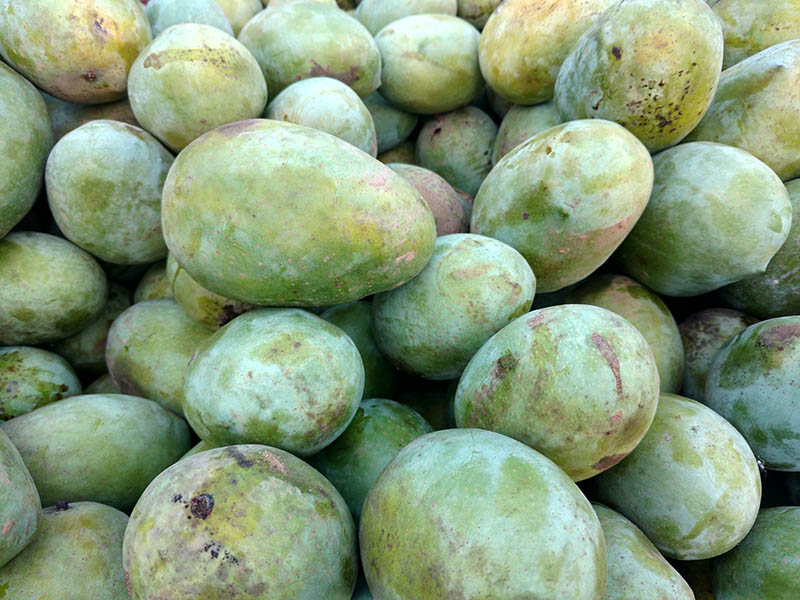
Langra mango, also known as Banarasi Langra or Malda mango, originally grows in Northern India and has made its way to other parts of the country. Nowadays, this type of mango grows in some areas of Pakistan as well.
Carrying some similarities with mango in the US, Langra mango also has green tone skin when it’s young. But when it’s ripe, the skin gradually turns to a nice yellow color but still retains some of the greenish tinges.
Langra mango has 2 to 5 fruits. Its season is normally around July or August, depending on how much rain that year.
Langra mango has been one of many exported agricultural products that brings pride to the Indian people. The fruit is not only extra juicy and sweet, but it also has a smooth texture that is perfect for eating raw or making into a dried mango snack.
12. Lippens Mango
Lippens mango may be a fruit that you have seen before. It is originally from Florida and became a commercial product in 1945. Nowadays, it remains mainly grown in Florida, USA, which is a land of sunlight and warm water.
Lippens fruit has an oblong-oval shape. This fruit has light green skin when maturing and yellow skin when it’s ripe with a tint of rouge blush. The mango flesh has a deep yellow color and a fruity candy-like scent. Its texture is fiberless, and it has a light sweetness flavor.
The right time to buy Lippens mango at a good price is from June to July because, at this time, Lippens mango is inexpensive and tastier than when it’s off-season.
13. Lady Finger Bananas
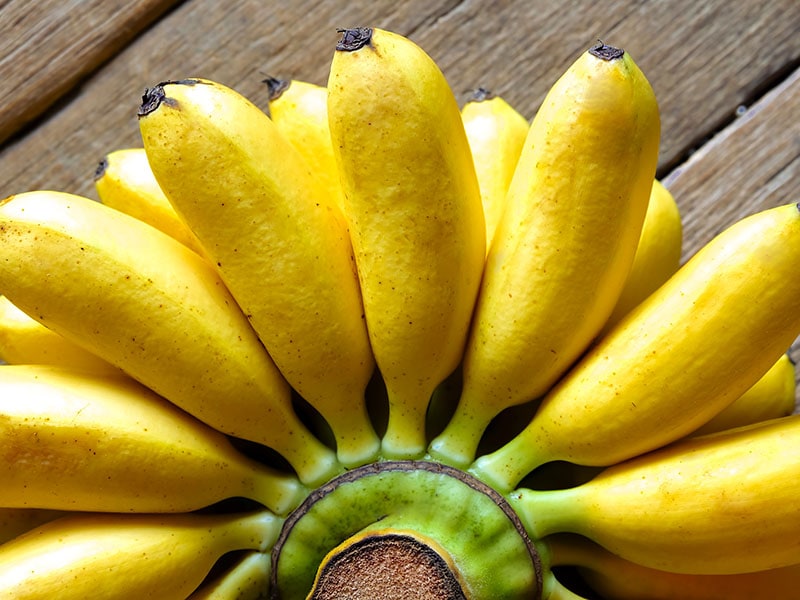
If you have visited countries like Indonesia, Thailand, Cambodia, and Vietnam, there is a high chance you have come across this amazing banana variant on the street. Lady Finger bananas were first seen in South Asia and Australia.
It is a curvy, seeded banana that grows on a tall, slender tree. This type of banana grows in a bunch that carries 10 to 15 hands, with each hand nurturing 12-18 bananas.
A banana is about 5 inches long with a thin size with light yellow skin. Lady Finger banana trees can give fruits all year round.
Lady Finger bananas are sweeter and creamier than regular bananas due to their tropical condition. Asian people love using this fruit as desserts such as deep-fried bananas, Che-Sweet Soup (a traditional Vietnamese dessert), sugar-coated dried bananas, etc.
14. Lambkin Melon
Lambkin melon is a relative of the Christmas melon or Santa Claus melon. This type of melon has a shape similar to an American football. The skin is a greenish mix with a yellowish pattern. Its flesh is fairly pale with a mild sweet taste and bitterness.
Lambkin melon is popular as a homegrown fruit for small restaurants or in-house consumers. It is rich in vitamin C, fiber, iron, and calcium. You can find it for about 6 months a year, from the summer to the winter.
It is best when eaten raw with the seeds rinsed out. Lambkin melon would make a great highlight for your salad, and you can make it into some ice cream.
When is the perfect time to harvest your Lambkin melon?
15. Lapsi Fruit
Lapsi is called Hog Plum in Nepal, a native fruit of many different Asian countries. The fruits grow on a tall tree, up to 20 meters or higher. The Lapsi tree is valuable for its fruits, the locals use its seed for medical reasons, and the hardwood is good for harvesting.
The fruit is oval with greenish skin and some dark or gray sp skin slowly turns yellow when the fruit is ripe. The flesh has a slightly lighter yellow shade than mango flesh.
One bite of Lapsi fruit can make you wince because the flavor is extremely sour. Therefore, I always eat it with some chili salt or shrimp powder salt to balance the taste. If you’re lucky, you may find a ripe and sweet Lapsi and enjoy it.
16. Lancetilla Mango
I have another mango representative on the list for you, and this Lancetilla mango is one of the excellent ones. It originated in Honduras and was introduced to the American people via mango festivals in the early 2000s.
As a heavy candidate for the title of the best mango, Lancetilla mango is heavy, and the taste is somewhat unique. One mango of this type can weigh from 2 to 5 pounds.
Lancetilla mango skin is red and fades into green. Its flesh is firm and bright yellow, with a unique sweet taste and a slightly sour aftertaste.
Lancetilla is a popular in making the mango and sticky rice dish, pickled mango, or other flavorsome mango sweet treats. If you come to Florida in the season for Lancetilla (August to September), don’t forget to grab one and try it out.
Top 5 Flavorful Berries Fruits Beginning With L
Berry is an excellent group of fruits with numerous vitamins and health benefits. It is also my favorite fruit group, and I’m glad many exotic berries start with the letter L, so I can introduce them to you
17. Lingonberries
Lingonberries, or you may know these fruits as partridgeberry, mountain cranberry, or cowberry. It grows all over the Northern Hemisphere, from Europe and Asia to North America. As a wild berry, people call it a superfood due to the many nutritional values and health benefits it carries.
Lingonberry is small and wears dark-red shiny skin with an acidic taste. It is in season from late summer to autumn. Some people compare its taste with cranberries and find similarities, although lingonberry is not as acrid. It’s a great match for both dessert and savory dishes.
Lingonberry is promoted to be beneficial for brain and oral health. It also helps protect kidney protection and promotes gut health.
Grow your own lingonberries with this comprehensive guide!
18. Lantana Camara Berries
Lantana Camara berry is of the berry type that bears fruits all year round, with the peak season in the summertime. It’s a wild plantation that grows in bushes and gives colorful tiny flowers. You can find this berry in the tropical climate areas of America, Australia, and throughout Asia.
Lantana Camara berry is edible when it’s ripe and turning into a dark purple shade. If you see this berry in your garden, make sure it’s ripe because the unripe or green berries might contain some toxins. You will find Lantana Camara berries in products such as jams, jellies, and dye inks.
19. Long Neck Avocado
Long Neck avocado has become popular in America for its giraffe-like appearance. But for the people in Florida, it’s just one of many types of avocado they have on the market. This avocado is native to tropical regions around the world, including Florida and the Caribbean.
The trees grow localized and haven’t been commercially produced. However, its taste is as good, if not tastier than other avocados. When ripe, Long Neck avocados have a smooth semi-butter texture with a light touch of salt.
As avocados should be, Long Neck avocados have vitamin K and C. It also helps boost the immune system.
20. Loganberry
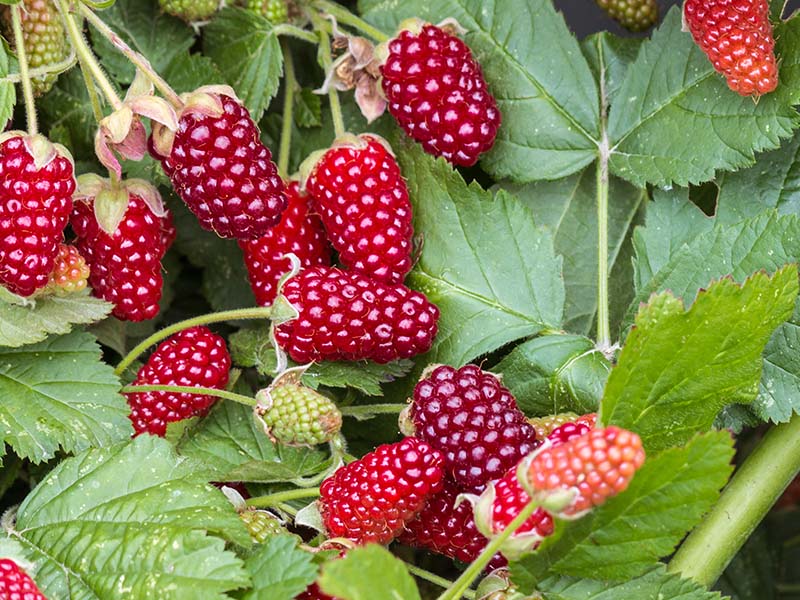
Loganberry is a hybrid of North American blackberry and European raspberry that is more leaning toward blackberry size and shape while keeping an alignment in taste with raspberry.
Loganberry grows on bushes and often bears fruits around midsummer to late autumn. This type of berry is extremely tasty, with tender skin and juicy flesh.
Loganberry is popular for beverages in New York and Canada. In England, people pair loganberry with Sherry trifle or juices as syrup, while in other parts of the world, it is consumed as wine, jams, and fruit syrups.
Experience picking and eating fresh loganberry with me now!
21. Lilly Pilly Berries
Lilly Pilly berries are small fruits sizing from 1 to 2 centimeters and are oval or round in shape. The fruit has this unique dark pink-purplish color and grows on small trees.
People know Lilly Pilly berries as Australian berries since the trees are native to Australia and some areas in Southeast Asia. Lilly Pilly berries were first discovered growing in the wild, and then people have produced them commercially worldwide.
It is an edible and tasty berry. You can eat it raw or in jams, jellies, and syrup or use it to make delicious salad dressing. You will sometimes find Lilly Pilly berry as an additional flavor in ice cream, cake pastry, smoothies, and on a cheese platter.
6 Juicy Pome Fruits With Letter L At The Beginning You Must Try
If you’re a fan of pome fruits like me, I am excited to show you some of the most special pome fruits starting with the letter L right here, right now!
22. Lord Lambourne Apple
Lord Lambourne apple was first introduced in England to be in a high-quality class of apples. This British apple is often greenish and yellow, with a large portion flushing in red or orange.
Biting into the apple, you are struck by the juiciness and then a wave of refreshing acidity. This combination leaves an unforgettable aromatic aftertaste.
Lord Lambourne apple is a mid-season apple, and you can find it in the UK at Farmer Markets or occasionally in the supermarket.
23. Liberty Apple
The Liberty apple is a hybrid apple developed in the US in 1955. This fruit cover is a dark, shiny red color similar to the apples you see in Disney movies. Its shape is fairly round and symmetrical.
The trees give medium-sized fruits. Each fruit size is an average of 3 inches or smaller. You can eat them fresh from the tree, make juices from the fruits, or store them for delicious apple pies.
The Liberty apple tree is an absolute home grower that blooms in mid-spring. Its white blossoms will cover the whole tree and bring a great scent to your home.
Here are several interesting facts about Liberty apples!
24. Lodi Apple
Lodi apple is another hybrid apple that is popular in the market. It carries a light green color on its skin and is commonly known as a cooking apple. You can find it anywhere in early summer, especially in the United States’s south.
As a summer fruit, the Lodi apple is great for apple pies, jams, and applesauce. Its flesh is juicy in an acerbic way with a luscious aftertaste that can make you mouth-watering.
Lodi apples are extremely attractive to birds and mammals. If you have these trees in your garden, make sure there are fences to protect your fruits.
25. Lady Apples
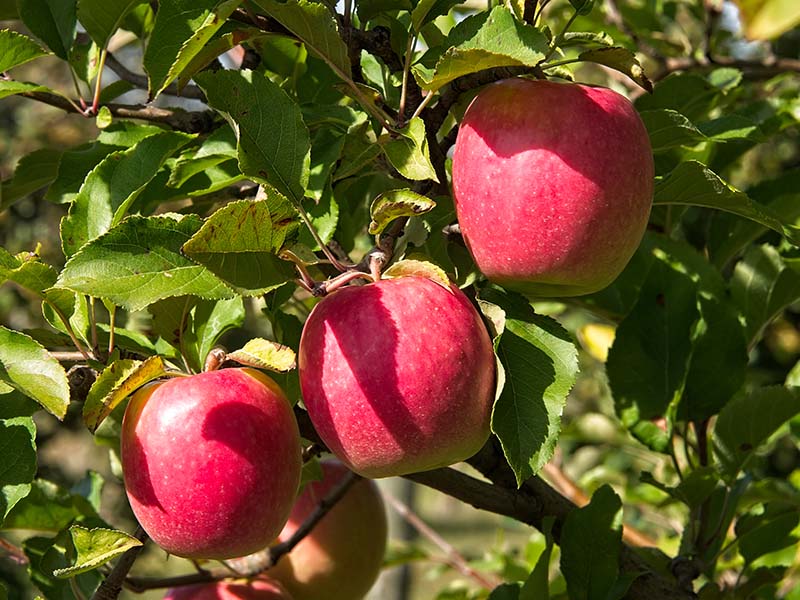
Lady apple has to be one of the oldest apples discovered and then introduced in America during the 1800s. It is now growing in many countries such as Australia, the USA, and the UK,…
You might have heard of it before as Pomme d’Api, Lay’s Finger, or Christmas apple. Lady apple has a rosy glow of green with blush red and a satin finish. It tastes aromatic and sour, which is similar to most apples.
Cooking methods such as baking, caramelizing, or roasting are best in bringing out the flavor of this fruit. That’s why you often find lady apples in these forms of food rather than being eaten raw. So if you find Lady apples on the market, buy and store some for your next apple pie.
26. Le Conte Pear
As fancy as the name may sound, you’ll be surprised that this pear has grown in Texas backyards for a long time. This fruit started as an agricultural wildlife exemption and was animal food. Then it made its way to the food and dessert table.
Le Conte pear is delicious when it’s ripe. But you can also eat it when it’s still young. This fruit’s coverage is a thin layer of green with poor skin and is about 5 to 8 centimeters in size.
The flesh is juicy, mildly sweet, and carries a light fragrance. The best time to get in is from July to August. However, you can always buy some extra and store them for up to 1 month.
27. Louise Bonne Of Jersey Pear
I have another pear representative on the list, who was reported to be from Normandy, France, in the late 1700s and had come to England via the Jersey island.
It is a dessert pear with a rich flavor and juicy flesh. It also carries a semi-butterfly scent, a tangy sweetness. The fruit’s skin is green in the background with a burning red side, very smooth and vibrant colors.
The right season to get Louise Bonne pear is from October to November. You won’t miss it when you see it on the market since it’s one of the most unique-looking color pears. It’s also great to display at your home for a soft sweet scent.
Top L-Something Stone Fruits You Might Never Hear Of
How about the stone fruit group starting with the letter L? Have you thought of any? If not, don’t worry too much. Let’s discover some of them together.
28. Langsat Fruit
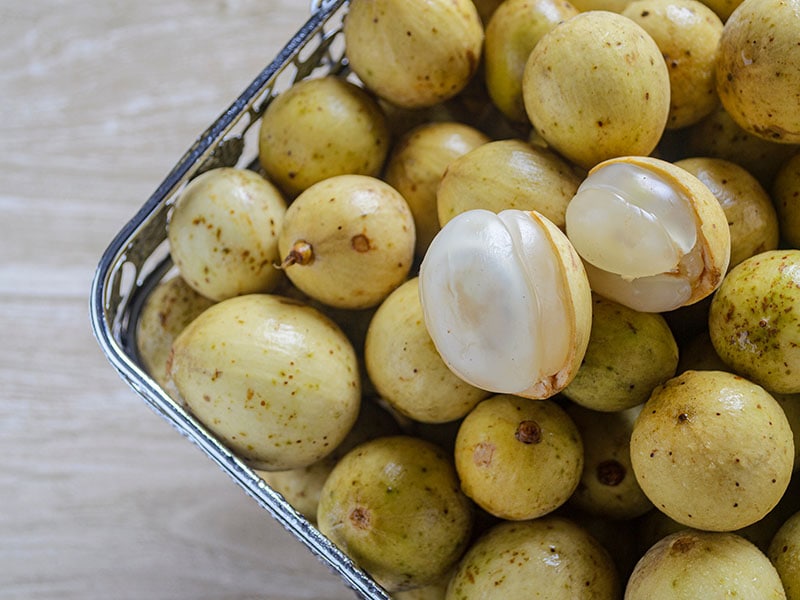
Langsat is a very popular fruit in Asian countries. Its journey started in western Malaysia and some islands of the Philippines and then made its way to Thailand, Vietnam, and the south of India.
The fruit grows in clusters forming from 20 to 30 oval fruits. Each fruit is about 1 to 2 inches in diameter and has light yellow skin with some gray spots. When I first saw it, I thought it was a bunch of baby potatoes stuck together.
It’s a deliciously edible fruit. After removing the skin, the fruits resemble garlic with 5 to 8 translucent lobes, and each lobe may or may not contain a flat seed. Langsat’s flesh tastes like no other. It’s firm and sweet, and the texture is semi-jelly.
You can’t find any more thorough review about langsat flavor than this one!
29. Longan
Longan fruit first seemed to be from the mountain range of Myanmar and China, then made its way to Cambodia, Vietnam, and Thailand. It is one of the most favored fruits in Asia that people often mistake for lychee.
Longan fruit is a tropical fruit with a mild aroma and sweet sugary white flesh underneath its brown matte shell. It carries a large, inedible, black seed.
This brown-colored fruit is a cooling fruit that helps detox the body. Hence, it’s used in traditional Chinese food, desserts, and traditional Eastern folk medicine. You might find dried longan in Asian groceries all year round and fresh longan between July, August, or September.
30. Langley Bullace Damson Plums
As a variety of plums, the Langley Bullace Damson plum was a kind of wild plum back in the day. Since the people discovered how tasty this plum could be in fruit preserves and canned food, it has become commercially produced.
The fruit is relatively small and has dark purple skin with a tough seed in the middle. It has a special tart flavor and an excellent firm texture. Apart from being preserved, the Langley Bullace Damson plum makes excellent pies and damson gin.
As much as I love this fruit, the Langley Bullace Damson plum is not so easy to find in the supermarket or in groceries since it’s more of a home garden fruit. If you have ever visited England or European countries, you should give it a try.
31. Lychee
Lychee grows in many Asian countries, including China and India. The first time Lychees were introduced in the US was in Florida in 1916. Although it is newly popular in the States, it has been one of the favorite fruits of Chinese people for a long time.
The fruit is oval or round. It has a berry red skin that you need to remove before eating. Each fruit is about 1 inch in diameter and grows separately on branches.
Its white transparent aril covers a large brown seed; the taste is tangy, sugary, and juicy. Dried lychee is a delicacy in Asia for its vitamins and flavor. It is quite popular in traditional desserts.
Don’t skip this review if you’re still wondering about lychee flavor.
5 Other Exotic Fruits That Start With Letter L
Besides some fruit groups I’ve walked you through, there are still many uncategorized fruits starting with the letter L. Let’s see what those fruits are, shall we?
32. Lardizabala Fruit
Lardizabala is recognized by names such as Coguil, Coiye, and Cille. The name Lardizabala is an English name for the fruit. You will find plenty of this fruit in the late summertime on Chile’s coastal mountains, especially the central and the south of Chile.
People grow these trees for their edible fruits and beautiful flowers for decoration. From being a wild plantation at first, they are now all over local markets across Chile and Peru. The fruit is about 2 to 3 inches long and looks very green and purple as ripe.
Lardizabala is a delicacy. People love it for its sweet taste. You can eat this fruit raw or cooked with some savory dishes.
33. Leucaena Leucocephala
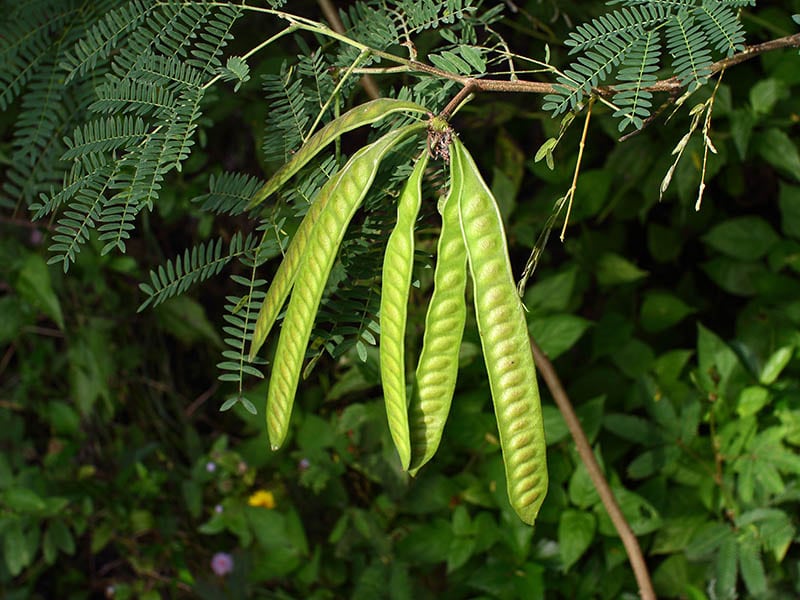
Leucaena Leucocephala is a small tree, and you may also know them as river tamarind or Jumbay. It is native to southern Mexico, northern Central America, and parts of Asia.
Only the young pods are edible food. Occasionally, you will find them in stews, legumes, salads, and tacos. Another usage of Leucaena Leucocephala is to make pulp in the pulp and paper industry.
34. Lucuma
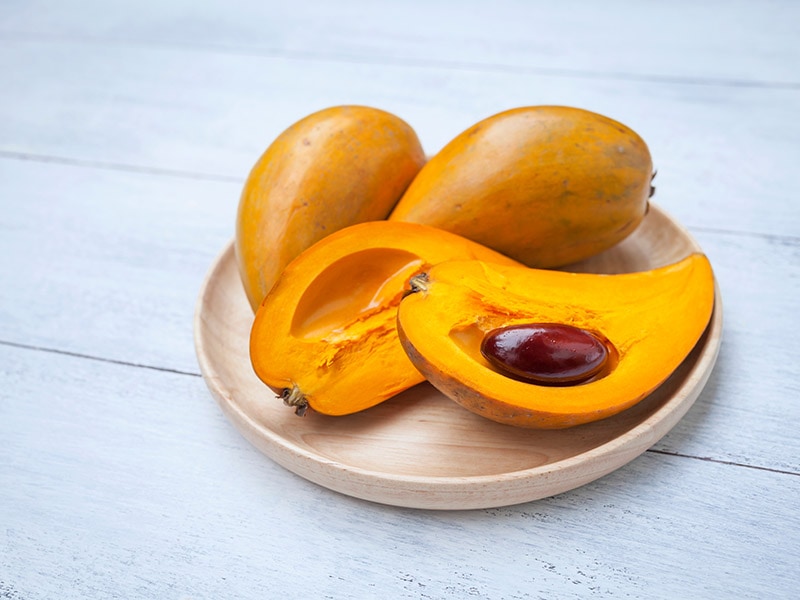
Lucuma is a delicious edible fruit that is native to South America. In Asia, people would call it Eggfruit. Lucuma is an oval or round-shaped fruit with a bright yellow color on its skin and flesh. This tone of yellow is similar to an egg yolk.
Not only the color, but Lucuma’s taste is also just as creamy and cheesy as a sweet yolk, with a light bitter aftertaste. To eat this fruit, you can simply peel the soft shell off and enjoy it like an avocado.
The best tip in picking Lucuma is to choose a soft and not too mushy one. This means the fruit is perfectly ripe. Lucuma is promoted for its health benefits and is often used in America as a sweetener replacement in the form of powder.
35. Long Island Cheese Pumpkin
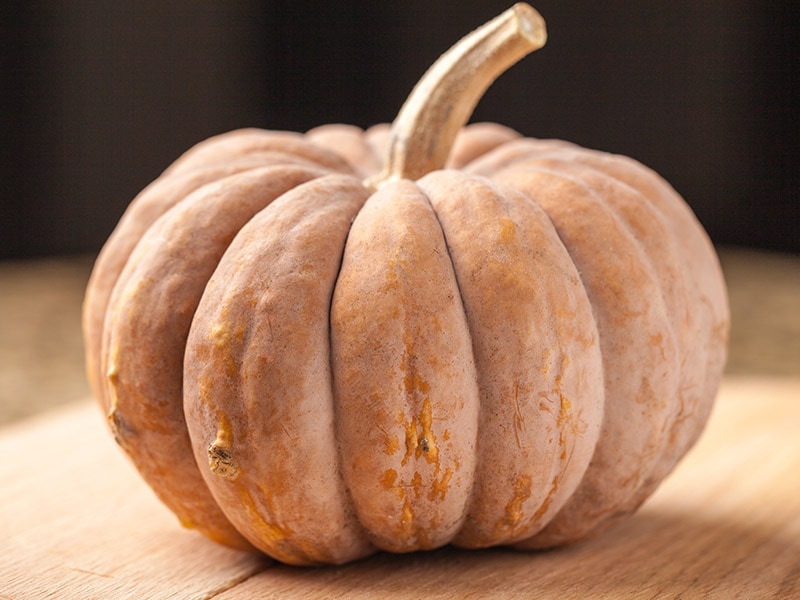
Long Island Cheese pumpkin or Long Island Cheese squash is a pumpkin whose shape resembles a cheese wheel on the outside.
Long Island Cheese pumpkin is known for its silky smooth and mellow texture. You can easily store this pumpkin for 3 to 6 months in the cooler or dry and dark storage.
People serve this fruit as savory in roasting, sauté dishes, soups, stews, and especially pumpkin pie. You may come across Long island Cheese pumpkin on the market from late fall to late winter, don’t forget to grab one for your next pumpkin dish.
36. Lablab
Lablab is a species of bean that is native to Africa. The fruit is a legume pod that varies in shape and size and is often seen to have green or purple colors. Lablab trees grow as a crop for human consumption and remain in their position in the regional agricultural system.
A Lablab plant can grow as long as 3-6 meters with thin hair all around, its leaves and flowers are edible as raw or cooked, and the seeds are used to make tofu. You can eat most parts of Lablab from top to bottom. What a plant!
Grow your Lalab Beans at home; why not?
You Might Be Able To Win A Fruit Naming Competition With Friends Now!
There you have it! After discovering these 36 different fruits that start with L together, I am confident that you now can join a fun fruit naming competition with friends and be the winner or runner-up.
Nonetheless, you should give these fruits a try. As exotic as their names may sound, their taste could be so good that you’re blown away. And who knows, someday you might call one of these your favorite fruits.
My personal favorite is the group of tropical fruits. What about yours? I’d like to hear your opinion, which fruits you’ve tried and how you would describe them to someone else that has never tasted the fruits.
It could be extremely helpful and appreciated if you can share your experience with me or share this post with your friends if you find it helpful and informative. I look forward to hearing from you.
Before I forget, please feel free to add to my list any other L fruits I might have missed in the comment section. I would love to know!
